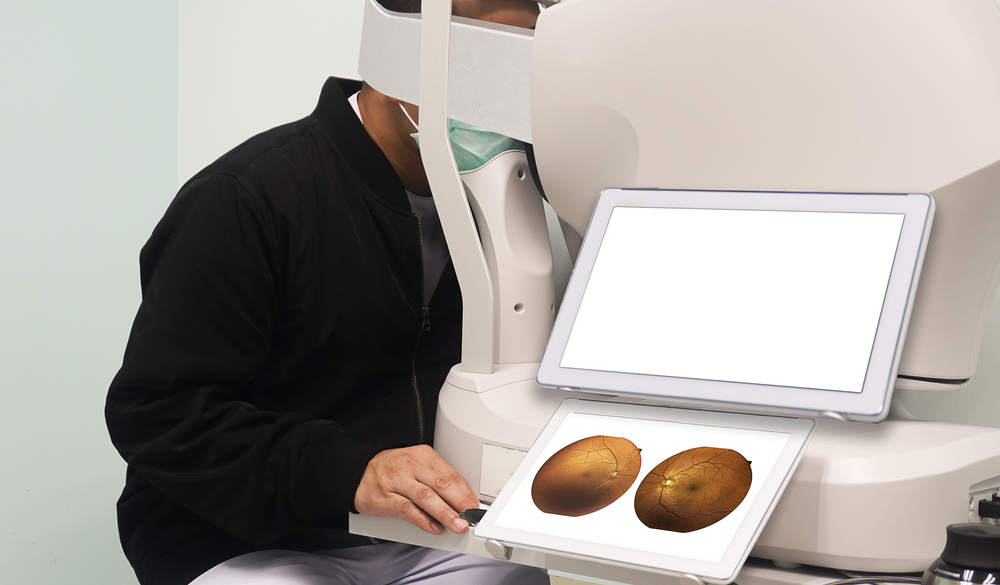
Diabetes is a life-altering condition, and it affects various aspects of life, including our eyesight. Diabetes and vision has become increasingly important in the medical field, highlighting the significant impact that diabetes can have on our visual health.
Diabetes and Its Impact on Vision
Diabetes can affect vision in several ways. High blood sugar levels can cause the lens within the eye to swell, leading to blurry vision. This change in vision is often one of the first noticeable symptoms of diabetes. However, the impact of diabetes on the eyes goes far beyond blurred vision.
Over time, high blood sugar levels can damage the blood vessels in the retina, the part of the eye that senses light and sends images to the brain. This damage can lead to a condition known as diabetic retinopathy, one of the most common diabetic eye conditions.
Diabetes also increases the risk of other eye conditions, such as cataracts and glaucoma. Cataracts cause the lens of the eye to become cloudy, while glaucoma results from an increase in fluid pressure within the eye, which can damage the optic nerve. Both conditions can cause vision loss if not treated promptly and effectively.
Common Diabetic Eye Conditions
When discussing diabetes and vision, it's important to highlight the common diabetic eye conditions. Diabetic retinopathy is the most common. It's a severe condition that can lead to vision loss and blindness. Diabetic macular edema, which is a consequence of retinopathy, can also lead to severe vision loss.
Cataracts, a condition where the lens of the eye becomes cloudy, are another common eye condition among people with diabetes. Cataracts can cause blurry vision and glare, and they tend to develop at a younger age in people with diabetes than in those without the disease.
Glaucoma, a group of diseases that damage the optic nerve, is another condition more common among people with diabetes. It's a serious condition that can lead to vision loss if not treated promptly.
How Diabetic Eye Exams Are Conducted
A comprehensive diabetic eye exam involves several tests to check for the common diabetic eye conditions. Firstly, eye drops are used to dilate the pupils, allowing the eye doctor to have a clear view of the back of the eye. This is followed by a visual acuity test that measures the ability to see at various distances.
Additionally, a tonometry test may be conducted to measure the pressure inside the eye, helping to screen for glaucoma. In some cases, an optical coherence tomography (OCT) exam may be done to provide cross-sectional images of the retina, which can help detect any swelling or fluid caused by diabetic retinopathy or macular edema.
Why Eye Exams Are Essential for Diabetics
These exams are not only essential for detecting common diabetic eye conditions but also for preventing vision loss. Early detection of these conditions is crucial because treatments are much more effective when started early. Regular eye exams can catch these conditions in their early stages, often before any vision loss has occurred.
Eye exams can also help monitor the progression of these conditions. If you've been diagnosed with a diabetic eye condition, regular check-ups will allow your eye doctor to monitor the condition closely and adjust your treatment plan as needed.
Regular eye exams can also provide an insight into how well your diabetes is being managed. Changes in vision or the health of your eyes can often indicate changes in your blood sugar levels, providing a valuable early warning sign that your diabetes may not be as well controlled as it should be.
Expert Tips for Keeping Your Eyes Healthy with Diabetes
Maintaining good eye health when living with diabetes involves more than just regular eye exams. Here are some expert tips on how to keep your eyes healthy with diabetes:
• Control your blood sugar: Keeping your blood sugar levels within the recommended range can significantly reduce the risk of developing diabetic eye conditions.
• Monitor your blood pressure and cholesterol: High blood pressure and high cholesterol can increase the risk of eye damage, so it's important to keep these under control as well.
• Quit smoking: Smoking can increase the risk of diabetic retinopathy and other eye conditions.
• Exercise regularly: Regular physical activity can help control your blood sugar levels and reduce the risk of eye problems.
• Eat a healthy diet: A diet rich in fruits, vegetables, whole grains, and lean protein can help manage diabetes and protect eye health.
Conclusion
Living with diabetes may be challenging, but with regular eye exams and by following the expert tips provided, you can protect your vision and continue to live a full and healthy life. Managing diabetes is a marathon, not a sprint, and every small step towards better health counts!
If you have diabetes, prioritize your eye health and schedule a comprehensive eye exam today. Visit East Vancouver Eye at our office in Vancouver, Washington. Please call (360) 449-3937 to schedule an appointment today.







